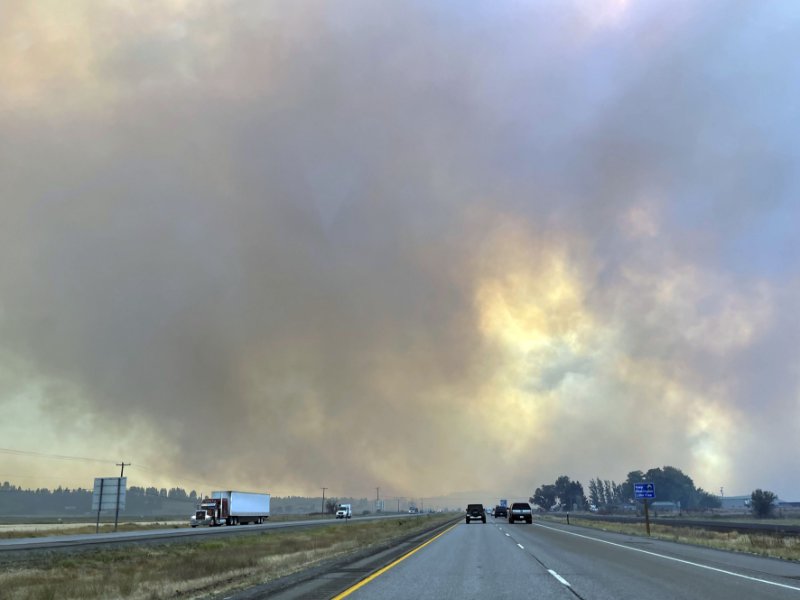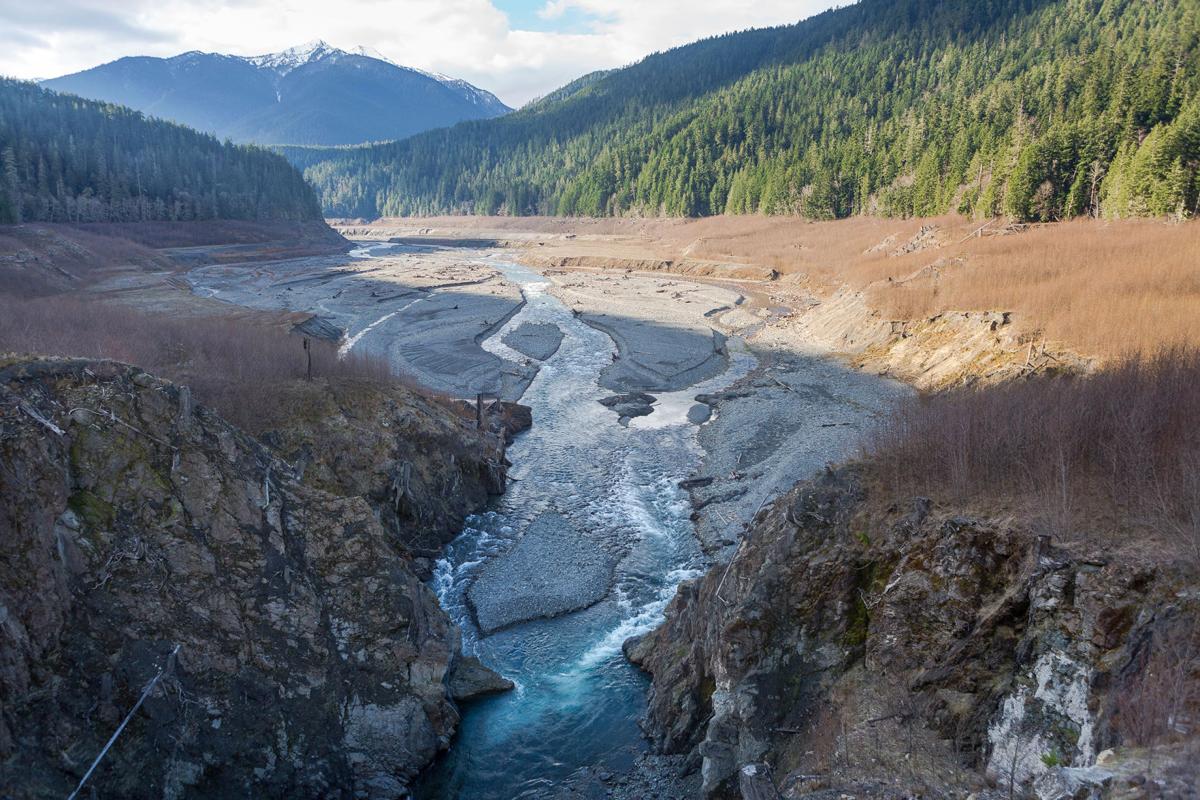
This spring, the warmest May in Washington state history forced an early end to Washington’s snowpack, leading to a statewide drought advisory in July and a drought emergency for many parts of the state. May through July was the fourth driest in state history. Then, in August, devastating fires tore through communities around Spokane. And even with the rains returning in the fall, conditions remained both warmer and drier than typical.
Is this the “new normal”? If the future brings more of the same, will we be prepared? With so many challenges, how can we prioritize our efforts and our investments in building a more resilient state? These are the kinds of questions a new national report is designed to help answer.
The National Climate Assessment stands as a comprehensive and sobering analysis of the current and future effects of climate change, including the impacts we’re already seeing here in the Northwest.
As we navigate the complex web of challenges, Washington state is taking steps to prepare for, respond to, and recover from current and projected climate impacts across the state. The Washington Department of Ecology is at the forefront of our state’s climate resilience work, paving the way for a more sustainable and resilient future.
The National Climate Assessment
The assessment is a product of collaboration among scientists, experts, and federal agencies, intended to provide an in-depth understanding of the climate challenges facing the U.S.
Released at a critical time, the latest assessment highlights the urgency of addressing climate change and underscores the need for immediate action. From rising temperatures and extreme weather events to the impacts on ecosystems and human health, the report paints a stark picture of our current reality and the potential consequences if we fail to act.
“The National Climate Assessment reinforces the risks we face from climate change — and the harmful impacts we’re already experiencing,” said Jennifer Hennessey, Ecology’s special assistant on climate resilience. “It highlights the importance of all of us doing our part to reduce the harmful impacts of climate change on people, our livelihoods, and environment.”
Climate risks in the Northwest
The report stressed the need for faster and deeper cuts in greenhouse gas emissions globally, as well as accelerated adaptation efforts; otherwise, severe climate risks to the U.S. will continue to grow. And it reinforced the importance of the work we’re doing at Ecology and in Washington state to reduce emissions and to advance climate resilience.
The effects of human-caused climate change are already far-reaching and getting worse in every region of the U.S., not just here in the Northwest. By continuing to implement Ecology’s climate work, we can do our part to reverse these trends and to better prepare our communities, infrastructure, and environment to protect them from the worst impacts.
In the report, Chapter 27 focuses specifically on projected impacts in the Pacific Northwest — Washington, Oregon, and Idaho. From the website:
“Extreme heat, flooding, wildfires, and other climate hazards threaten human health, sense of place, ecosystems, infrastructure, and industries in the Northwest. Impacts across sectors will have cascading effects on livelihoods and well-being, with Tribes and other frontline communities facing disproportionate risks. Adaptation actions that prioritize social equity and utilize local and Indigenous Knowledge can support regional resilience.”
The report also underlines that:
- Climate change exacerbates existing social, economic, and health inequities. And climate action offers the opportunity to build a more just and resilient nation.
- Regional economies and livelihoods are threatened by damages to natural resources, intensifying extremes, and impacts to infrastructure systems.
- Climate change impacts aren’t evenly distributed. Disruptions caused by climate change impact heritage and sense of place for many Northwest Tribes and overburdened communities.
"Climate impacts often hit communities of color, low-income communities, and vulnerable populations first and worst,” Hennessey said. “These same communities struggle to recover from climate fueled events like flooding or extreme heat, or to take actions that reduce, prevent, or help them withstand climate impacts.”
Addressing climate pollution
Under Washington state law, Ecology is working to reduce carbon pollution 95% by 2050 — and to offset the remaining 5%. Ecology also is leading work to more closely monitor air quality in some of our most vulnerable communities — and to ensure that in addition to cutting carbon pollution, we're working to reduce other forms of air pollution as well.
The most important tool Washington has to meet the state's greenhouse gas reduction targets is the new cap-and-invest program, created under the Climate Commitment Act. This market-based approach sets an overall cap on emissions, and then requires major sources of carbon pollution to obtain allowances to cover their emissions. Some of these allowances are sold at quarterly auctions, which have already raised almost $1.5 billion in 2023.
That funding is critical to Washington’s climate resilience efforts by supporting investments in restoring habitats, reducing flood risks, improving stormwater infrastructure, protecting shorelines, and improving forest health.
Washington's climate resilience initiatives
Amidst these challenges, the Washington Legislature recognized the need for a coordinated approach to tackling these challenges, passing a law earlier this year that directs Ecology to update the state's Climate Resilience Strategy.
In partnership with nine other state agencies — the departments of Agriculture, Commerce, Fish and Wildlife, Health, Natural Resources, and Transportation, as well as the Washington Emergency Management Division, Washington State Conservation Commission, and the Puget Sound Partnership — we’re working to update the strategy, which will guide state efforts to address:
- Climate impacts to support healthy and safe communities.
- Designing and building infrastructure that can withstand floods, droughts, wildfires, and sea level rise.
- The restoration of ecosystems that can adapt to changing surroundings, protecting threatened salmon and other wildlife susceptible to climate change.
Community engagement
This isn’t just an exercise for state agencies; this work affects everyone in Washington.
- We'll host three listening sessions to hear input from individuals, communities, and organizations across the state. These listening sessions will be held virtually via Zoom on Dec. 5, 6, and 7.
- A survey is open to collect public input. It closes Jan. 12, 2024.
- The listening sessions and survey aim to provide opportunities for Ecology staff to listen and learn from individuals and communities about the most pressing climate risks they face; challenges and opportunities in responding to and preparing for these risks; and their vision for a more climate-resilient Washington.
- We’ll ask:
- What climate change impacts are you most concerned about?
- What are the biggest needs and opportunities in preparing for, responding to, or adapting to these impacts?
- What is your vision for a more climate-resilient Washington?
As the National Climate Assessment sounds the alarm on the urgent need for climate action, Washington can serve as a model of how taking climate resilience seriously can protect our health, our environment and our economy in the face of an uncertain future.
“By prioritizing climate resilience, we’re helping people better prepare for and overcome the damage climate change is already causing to communities around our state,” Hennessey said. “Being prepared, having plans in place, making investments now instead of waiting to respond to a crisis — these are all steps that will help us build a more prosperous, sustainable and equitable future for all Washingtonians.”


